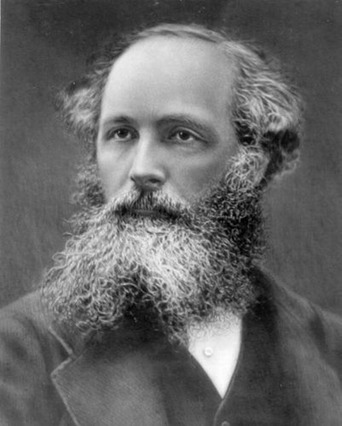Electric and magnetic forces were added to Newton's picture in the 19th century, most famously by James Clerk Maxwell (shown here). Later, the last two nuclear forces, the "strong" and "weak" nuclear forces came along to explain very small phenomena. The whole modern picture of forces consists of Einstein's general relativity, which dominates explanations on the largest scales, and the quantum theory plus special relativity, combined into the standard model of particle physics, whiich is applied to the smallest scales. It all fits on a T shirt. But gravity is not integrated properly yet.

One way to organize the chain is to ask which of the basic forces dominates at each scale. Then the various explanations have to be fitted together, and this is sometimes difficult. The standard model does not include gravitation. The transition from the quantum world to the classical (Newtonian) world is notoriously problematic.
Much of what we know about the nucleus and the fundamental particles comes from scattering experiments. The grandaddy of all scattering experiments is the Rutherford Scattering Experiment. Studies of cosmic rays were also important, before particle accelerators took over.
Today, giant accelerators like the Large Hadron Collider (LHC) at CERN create powerful beams of particles which are used to probe down to scales much smaller than protons. Huge detectors like the ATLAS detector at the LHC are required to measure all the particles that emerge from collisions. Here is a good diagram of the detector. You can watch the data arrive live here. The Standard Model of Particle Physics describes the dynamics of the various types of elementary particles which inlcude leptons (like the electron) and hadrons (like the proton and neutron, which are composed of quarks). Hadrons are further classified into mesons and baryons: 2 quarks for a meson, and 3 for a baryon.
List of mesons, List of baryons. Most of these particles are unstable and decay into simpler stable particles. All particles made of quarks are collectively called hadrons.
Recently, an experiment involving neutrinos made the news because it appeared that the neutrinos had been caught travelling faster than light. This result would be earth shattering, if it is true. You can read some nice news stories about it here, and here, and many other places. You can have a go at reading the original scientific paper on the experiment here. Needless to say, people are quite skeptical about the correctness of this experiment and it will certainly be closely tested before being accepted.
Tablet notes for lecture 5 here. Lecture 7, here.